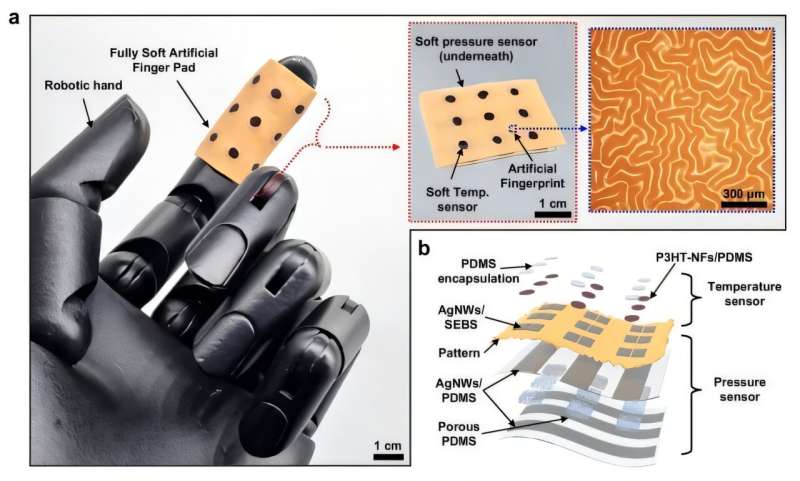Flexible electronic skin with random, fingerprint-like patterns so unique, the odds of duplication are practically zero, this could redefine security, human-robot interaction, and the future of soft robotics.

In a major leap for human-machine interaction, scientists have developed advanced electronic skin that can mimic — and even surpass — the uniqueness of human fingerprints. The research, led by Professor Kyoseung Sim from the Department of Chemistry at UNIST, has introduced flexible electronic skin featuring random, unrepeatable wrinkling patterns. The advancement could reshape how robots and devices identify themselves and interact with the world.

While the odds of two humans sharing identical fingerprints are around 1 in 640 billion, this new artificial skin pushes the boundaries of uniqueness even further. The likelihood of two electronic skins having the same wrinkling pattern is so low it defies imagination: just 1 in 10⁴³ for a 1mm² section — making it roughly 10²³² times rarer than human fingerprint duplication.The research was a collaborative effort between UNIST and the University of Houston, involving first authors Juyeong Lee and Haechan Park, alongside Professor Zhengwei Li’s team.
The team’s innovation lies in a simple yet effective fabrication method. Using a flexible polymer known as styrene–ethylene–butylene–styrene (SEBS), the material is chemically treated and then exposed to toluene solvent. The surface contracts as the solvent evaporates during a high-speed spinning process, forming random and highly detailed wrinkles. These microscopic patterns act like artificial fingerprints, giving each piece of electronic skin a unique identity.
Beyond identification, the skin was engineered for real-world use. Unlike conventional materials, this flexible electronic skin can endure physical impacts, heat, and humidity without losing its signature patterns. When applied to a robotic hand, the skin enables the robot to perform human-like tasks — from gripping objects to distinguishing textures and reacting to temperature changes. In one demonstration, a robot with this skin avoided a heated surface, mimicking human reflexes.
“This technology opens new doors for personalised electronic skins, soft robotics, and advanced human-machine interfaces,” said Professor Sim. “Our simple process produces more unique patterns than human fingerprints, which could transform future security and identification systems.”








